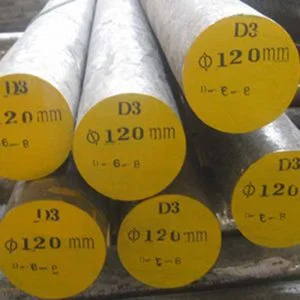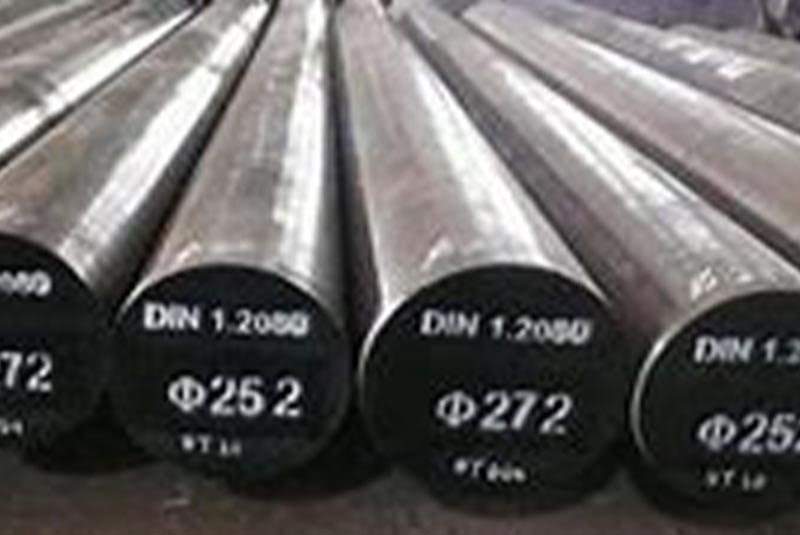Introduction

D3 tool steel, renowned for its exceptional properties in industrial applications, stands as a stalwart material in various engineering sectors. Understanding its composition, heat treatment, and optimal usage is pivotal for maximizing its performance and longevity. This article delves into the intricacies of D3 tool steel, offering insights on how to optimize its performance in diverse settings.
Understanding D3 Tool Steel
D3 tool steel is renowned for its exceptional properties, which stem from its carefully crafted composition. Comprising high levels of carbon and chromium, D3 steel belongs to the family of cold work tool steels, which are specifically engineered to withstand the rigors of mechanical stress, friction, and abrasion encountered in cold working operations.
In addition to carbon and chromium, D3 steel often contains trace amounts of molybdenum, vanadium, and sometimes nickel. These alloying elements play crucial roles in enhancing various aspects of the steel’s performance. Molybdenum, for instance, contributes to the steel’s hardenability, allowing it to attain high levels of hardness during heat treatment. Vanadium aids in refining the grain structure of the steel, thereby improving its toughness and wear resistance. Nickel, when present, can further enhance toughness and dimensional stability.
The amalgamation of these elements results in a steel alloy that exhibits remarkable toughness, wear resistance, and dimensional stability. These properties render D3 steel highly suitable for a wide range of applications, including but not limited to blanking dies, forming dies, and thread rolling dies. In these applications, where tools are subjected to repeated stress, abrasion, and deformation, the exceptional performance of D3 steel ensures prolonged tool life and superior machining efficiency.
Heat Treatment of D3 Tool Steel
The heat treatment process significantly influences the performance of D3 tool steel. Proper heat treatment enhances its hardness, toughness, and wear resistance. Common heat treatment steps for D3 steel include annealing, hardening, tempering, and stress relieving. It’s crucial to adhere to precise temperature and cooling rate parameters to achieve desired mechanical properties.
Optimizing Performance in Industrial Applications
D3 tool steel finds extensive usage in a myriad of industrial applications. To optimize its performance, factors such as tool design, machining parameters, and operating conditions must be meticulously considered. Utilizing D3 steel in the appropriate hardness range for specific applications ensures optimal performance and longevity of tools.
Maintenance and Care
Proper maintenance and care are imperative for prolonging the lifespan of tools made from D3 steel. Regular inspection for signs of wear, timely regrinding or sharpening, and appropriate storage conditions contribute to maintaining tool integrity and performance. Additionally, implementing effective lubrication and coolant strategies during machining operations aids in reducing friction and heat generation.
Properties of D3 Tool Steel

| Property | Description |
|---|---|
| Hardness | High hardness, typically ranging from 58 to 64 HRC |
| Wear Resistance | Exceptional wear resistance, ensuring prolonged tool life |
| Toughness | Good toughness, enabling resistance to chipping and cracking |
| Dimensional Stability | Excellent dimensional stability, reducing the risk of deformation during use |
| Machinability | Moderate machinability, necessitating appropriate tooling and cutting parameters |
Conclusion
D3 tool steel stands as a cornerstone material in the realm of cold work tool steels, owing to its exceptional properties and versatility. By understanding its composition, properties, and optimal usage, engineers and manufacturers can harness its full potential in various industrial applications. Adhering to precise heat treatment processes, optimizing machining parameters, and ensuring proper maintenance are key tenets in maximizing the performance and longevity of tools made from D3 tool steel.
FAQ
Q:What are the common applications of D3 tool steel?
A:D3 tool steel finds extensive usage in applications such as blanking dies, forming dies, thread rolling dies, and punches due to its high hardness and wear resistance.
Q:How does heat treatment affect the properties of D3 steel?
A:Proper heat treatment enhances the hardness, toughness, and wear resistance of D3 steel, ensuring optimal performance in various industrial applications.
Q:What maintenance practices are recommended for tools made from D3 tool steel?
A:Regular inspection, timely regrinding or sharpening, and effective lubrication and coolant strategies are essential maintenance practices for prolonging the lifespan of tools made from D3 tool steel.
Q:Is D3 steel suitable for high-temperature applications?
A:D3 steel is primarily designed for cold work applications and may not exhibit optimal performance in high-temperature environments. It is advisable to consult with materials engineers for applications requiring high-temperature resistance.
Q:Can D3 tool steel be welded?
A:While D3 tool steel can be welded using conventional methods, it is essential to employ preheating and post-weld heat treatment to mitigate the risk of cracking and ensure adequate mechanical properties.
